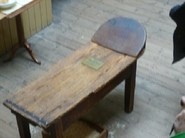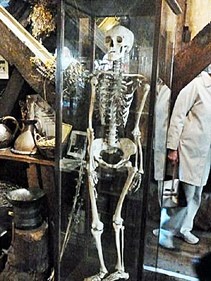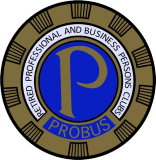First call was the Old Operating Theatre Museum of St Thomas Hospital, located in a garrett, above St Thomas church and adjacent to the Old St Thomas Hospital. The only entrance/exit to the Museum was up a steep spiral staircase with rope handle, but that did not deter the majority of our party. The fascinating lecture relating to surgery in Victorian era, took place in the original style Theatre (featuring a large skylight to maximise natural light available). Our party gathered in tiers around an old short wooden operating table, with a box of straw underneath to catch the blood. The speaker had everyone’s full attention and we absorbed much information about medicine and operations in Victorian times, and also, by means of a mock amputation, the ancient operating tools and techniques. Techniques used to aid surgery included tourniquets, blindfolding the patient, use of Drugs, (including alcohol or opium), and speed of surgery (90 seconds for an amputation – cutting plus sawing). The explanations for the disastrous low probability of surviving operations and amputations, lay in the conditions – lack of sterilisation and anaesthetics (only discovered much later). Most patients died from blood loss, trauma, and blood poisoning.
Extremely interesting, and we were thankful that we did not live in that era.
Our party were all enthralled by the insight provided by Charles Henty (the Secondary and Under Sheriff of London) into the Central Criminal Courts of the Old Bailey, as we sat in seats in one of the courtrooms. His insight led us through not only the layout of the court, its entries and exits together with explanations of how these had developed over a couple of Centuries, to where technology aids but does not supplement experience and case history. The explanations were clear and concise and illustrated by a series of anecdotes, covering events which occur not only everyday, but also in unplanned situations – these were professionally presented with flowing movement around the court.so as to bring each example to life. The examples and extracts from case histories were impressive.
No less impressive was the volume and scope of the building itself, both above and below ground, with its 18 Courts and 54 holding cells and associated complexity of daily operations of moving, holding and guarding prisoners. We saw the security of the cells in the basement for ourselves.
Most of our Members have, thankfully, not had close contact with criminal courts, and were blown away by the systems, processes and safeguards.
An altogether very comprehensive and entertaining exposition, by an enthusiastic speaker, who filled us with confidence about the operation of the Old Bailey courts and the British judiciary system. We will now sleep more peacefully in our beds at night. And we now have 30 Members who know what will happen if they have to appear at the Criminal Court.
A thoroughly enjoyable and informative day.
 The Old Operating Theatre. |  An old operating table. |  | ||
 | Tour of Old Bailey and Old Operating Theatre Museum |  |
